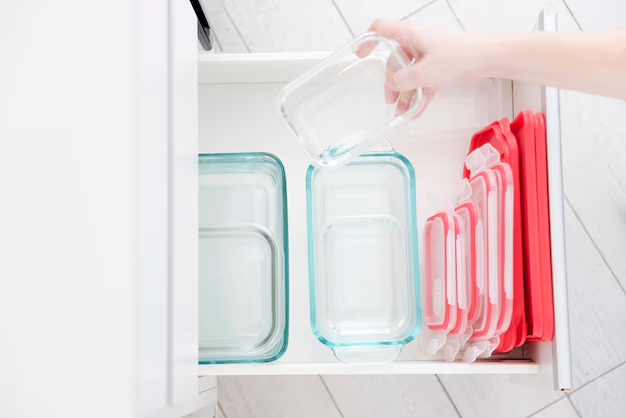The Essential Guide to Effortlessly Defrosting Your GE Refrigerator
If you own a GE refrigerator, you're likely no stranger to frost build-up. It can be frustrating to open your fridge or freezer, only to find its contents covered in a layer of frost. Not only does frost take up valuable storage space, but it also makes the unit less efficient. Thankfully, defrosting your GE refrigerator is a task you can handle with relative ease if you know the right steps. This comprehensive guide will walk you through the reasons why defrosting is necessary and provide a detailed process on how to tackle this task efficiently.
🧊 Why Frost Accumulates in Your GE Refrigerator
Before exploring the "how-to," it's crucial to understand the "why." Frost build-up is a common issue in many refrigerators, especially those without a frost-free feature. Here are a few reasons why frost may accumulate in your GE refrigerator:
Ineffective Seal
A weak or damaged door seal can let warm, moist air seep into the freezer, leading to frost formation.
Frequent Door Opening
Repeatedly opening and closing your refrigerator or freezer allows warm air to enter, causing condensation, which can turn into frost over time.
Temperature Settings
Keeping your freezer at a very low temperature can encourage frost build-up.
Aging Components
Components such as thermostats, defrost timers, and heaters can wear out with time, leading to frost development.
Understanding these causes will help in better maintaining your refrigerator and mitigating future frost issues.
🔧 Preparing to Defrost Your GE Refrigerator
Before diving into the defrosting process, make sure you’re well-prepared. Here’s a step-by-step guide to set the stage:
Gather Supplies: You’ll need towels, a bowl or pan, a soft sponge or cloth, and possibly a hair dryer if you wish to speed up the process.
Remove Contents: For effective defrosting, empty your refrigerator and freezer. Store perishable food items in a cooler with ice packs to keep them fresh.
Unplug the Unit: Safely disconnect the power from your refrigerator. This prevents any electrical hazards.
Place Towels on the Floor: This will help absorb any excess water that spills onto the kitchen floor during the defrosting process.
Open the Doors: Allowing warm air to circulate speeds up the defrosting process.
🕒 The Defrosting Process: Step-by-Step Guide
After setting up, it’s time to get into the defrosting action:
Natural Defrosting
Step 1: Wait It Out
The simplest method is to let the frost melt naturally. This can take several hours, so patience is key. Leave the refrigerator doors open to allow warm air in.
Step 2: Collect Water
As the ice melts, water will accumulate inside the refrigerator. Regularly use towels to soak up this meltwater and prevent spillage.
Accelerated Defrosting
If you’re keen to quicken the process, here’s what you can do:
Step 1: Use a Hair Dryer
Set a hairdryer to a low heat setting and carefully direct the warm air toward the frost. Be cautious to avoid direct contact with the freezer surfaces or any puddles of water.
Step 2: Manage Water Efficiently
Continuously mop up water with towels, and ensure it doesn't pool near electrical outlets or components.
Thorough Cleaning
Once all the frost has melted, it’s essential to clean the inside of your refrigerator and freezer:
- Solution Mix: Create a mild cleaning solution using warm water and a splash of vinegar.
- Wipe Down Surfaces: Use a soft cloth to gently clean all interior surfaces.
- Dry Thoroughly: Ensure everything is dry before plugging the unit back in.
🌟 Re-Stock and Power-On
Once your unit is fully defrosted and cleaned:
- Re-establish Power: Plug your refrigerator back in.
- Restore Temperature: Allow it to return to the desired cooling temperature before restocking.
- Organize Contents: Return your food items, taking care to arrange them for optimal air circulation.
🔄 Maintenance Tips to Minimize Frost Buildup
Routine maintenance can significantly reduce frost buildup, thus extending the intervals between defrosting:
Check Seals: Regularly inspect the door seals and clean them with mild soap to ensure no air leaks.
Adjust Frequency of Door Openings: Try to consolidate items needed from the fridge to minimize door opening.
Temperature Alerts: Install a thermometer to monitor the internal temperature and adjust settings as needed.
Routine Checks and Cleaning: Schedule monthly checks to keep components clean and functioning properly.
🌟 Quick Summary of Tips & Steps
Here’s a cheat-sheet to keep handy for defrosting your GE refrigerator:
Prepare:
- 🧰 Gather tools (towels, sponge, hair dryer)
- 🥶 Remove contents and unplug
- 🚪 Open doors and lay towels
Defrost:
- 🕛 Natural: Let melt; collect water
- 🔥 Fast: Use hair dryer cautiously
Clean & Dry:
- 🧼 Wipe with vinegar solution
- 🧻 Dry all areas
Re-stock & Power:
- 🔌 Re-plug and reach desired temperature
- 📦 Reorganize food items
Maintain:
- 🔍 Regular seal checks
- 🌡️ Monitor temperature
- 🗓️ Routine cleaning
By keeping these steps in mind, you'll not only maintain a frost-free refrigerator but also enhance its efficiency and longevity. This simple yet effective task ensures that your GE refrigerator functions seamlessly, keeping your food fresh, and your household running smoothly.
